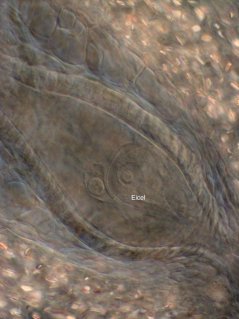
New: seeds that are actually cuttings
Plants can only make seeds when the flowers have been pollinated, for example by bees or the wind. The wind or insects carry the pollen from one plant (the father) to another plant (the mother). In this way, the egg cells of the mother plant are fertilized and seeds are produced. The seedlings that grow from the seeds all have different combinations of the father's and mother's genetics, just like with humans.
But some wild plants, such as dandelions, can also make seeds without pollination. They develop directly from the egg cells of the mother plant. That's called apomixis. The genetic traits are then not mixed. The seedlings that grow from those seeds then all have the same properties as the mother plant.
Faster and better

You can thus say that these are cuttings in the form of seeds; cuttings-seeds. And cuttings-seeds are also much faster to make and better to store and transport than regular cuttings. Plant breeders from all over the world have therefore been looking forward to the possibility of using these cuttings-seeds for important crops for a long time.
Suppose a plant breeder has a lettuce plant with a fantastic new combination of traits, for example a high resistance to diseases and leaves that are tasty and have a good shelf life and contain extra vitamins. Using the cuttings-seeds trick, the plant breeder can then very easily make seeds from which plants grow, which all also have that fantastic combination of properties as the mother plant.
Key gene
Researchers from WUR and KeyGene, together with researchers from New Zealand and Japan, have discovered the gene that is the key to making cuttings-seeds.
It was like looking for the needle in the haystack, because the gene is only one-millionth of the total DNA of the dandelion. The researchers published their discovery in the important scientific journal Nature Genetics on January 6th, 2022.
The international research team hopes that plant breeders and fellow researchers from all over the world will use the invention in their own work. The team expects that cuttings-seeds can ensure for example that new crops that can better withstand diseases and climate change will be developed more quickly.
